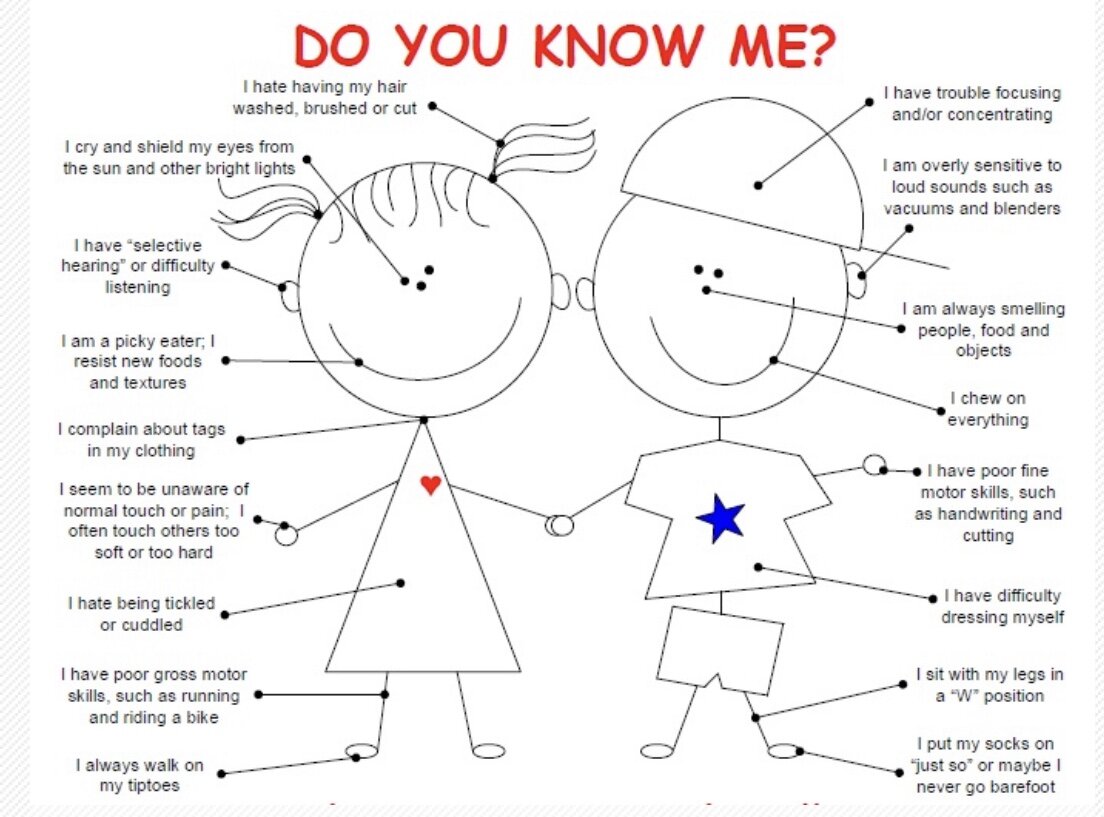What is Sensory Integration?
This is a question that I get all the time. It’s understandable, this can be confusing! So here we go, I’ll try my best to explain in a way that doesn’t bore you straight off this page haha.
Each person is born with multiple senses that affect how we function on a day to day basis. You could probably name a few off the top of your head right now: vision, hearing, taste, smell, and touch. While these are all correct, there are two other senses that can also affect a person’s ability to function that we don't often hear about. These senses are the proprioceptive sense and the vestibular sense. Since you might not be as familiar with these last two senses, here is some additional information.
The proprioceptive sense is made up of our joints, muscles and ligaments. This sense helps us understand where our body parts are and what they are doing, even if we cannot see them. For example, if my hand is behind my back I can still tell that I am making a fist or waving. If your child is having a harder time interpreting this sense they may appear to be clumsy and often bump into other people or objects more than other children their age.
The vestibular sense is made up of the organs inside our inner ear. This sense helps us understand balance and movement and where our body is in relation to the surface of the earth. When we have fluid in our ears, or a head cold we often feel “dizzy”, and have a more difficult time navigating through our daily life. This can be how it feels to people, or children, who may have a hard time interpreting vestibular input. A child who is having a harder time interpreting this sense may need to move more or resist movement more than other children their age.
All of these senses (vision, hearing, taste, smell, touch, vestibular and proprioceptive) are constantly sending information to the brain, the brain is then processing the information and relaying to the body what needs to be done in order to react appropriately. If one of these senses is “out of balance” or “off” (over or under responsive) then it can cause confusion in the child and the child may react in a way that is not appropriate. For example, if a child is sensitive to touch, they may over respond to touch by jumping away or crying out, or if a child needs more tactile input they may touch others or objects more than other children their age.
Many times, a child who has deficits in their sensory system tend to have a harder time in school and at home. Occupational therapy can help by pinpointing which sensory system may be under or over responsive and provide that child, and family, with strategies to help the child grow and thrive.
There, have I lost you? I hope not! However, if I did, here are some additional websites that may help:)
https://theinspiredtreehouse.com/sensory-integration/
https://theinspiredtreehouse.com/sensory-processing-myths/
https://www.spdstar.org/basic/understanding-sensory-processing-disorder

